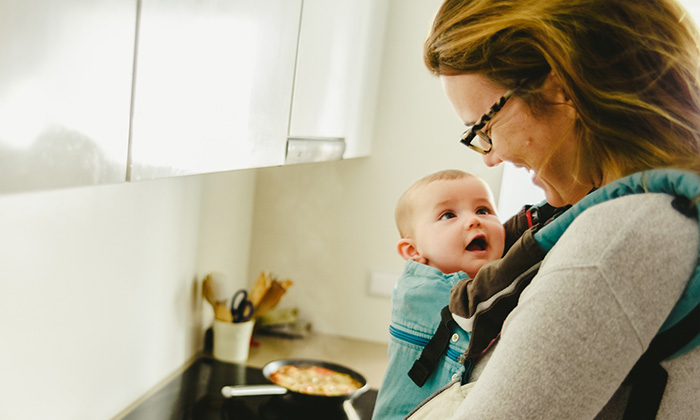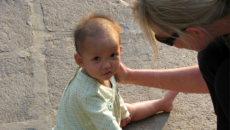Only a small percentage of adopted infants come directly from the hospital into the homes of their new families. Most spend some time in foster care or in an orphanage. Some react to the transition without much complaint. But many feel the trauma of adjustment: fear of new people and new surroundings, unfamiliar food, a foreign bed. Here are some tips for easing their entry and for facilitating parent-child bonding:
- Wear the baby in a chest carrier as much as possible. This is particularly important for infants who come from “carrying” cultures, where mothers and caretakers regularly strap children to their backs. Most of these “carried” babies react negatively to carriages and many have a difficult time with carseats.
- Initially, one parent should be the only person meeting the baby’s needs. The baby needs to bond with one person, before branching out to others.
- Bathe together to promote skin-to-skin contact. This is especially important for older infants, who may be fearful of a large tub.
- When your baby gets a shot, the parent shouldn’t be the one to hold her. Let a nurse hold the child while the parent comforts her.
- If you wear perfume, place a tiny drop on the baby’s arm so she has your smell with her at all times.
- Music can be a great soother. If you’re adopting from another country, try finding some CDs of lullabies in the child’s native language. Play the songs before naptime or bed.
- Sleep with a baby blanket in your bed for several weeks, then mail it (unwashed) to the orphanage or caretaker. Ask that the blanket be put in the crib with your baby. It will be something the child can attach to and bring home with him.
- Make sure you ask the original caretaker about food, bedtime, and comfort routines. Copy the procedures as much as possible.
- Think about a family bed. Infants adopted from Latin America are often used to sleeping alone in a crib. But Asian children from foster care may be more comfortable sleeping with adults, which is common in their culture. It may be wise to start your baby in your bed, then gradually move him into a nearby crib, and eventually, into his own room.
- Try daily massages. Again, the point is hands-on touching, getting the child used to you — your feel and your smell. Read Infant Massage, A Handbook for Loving Parents by Vimala Schneider McClure.



